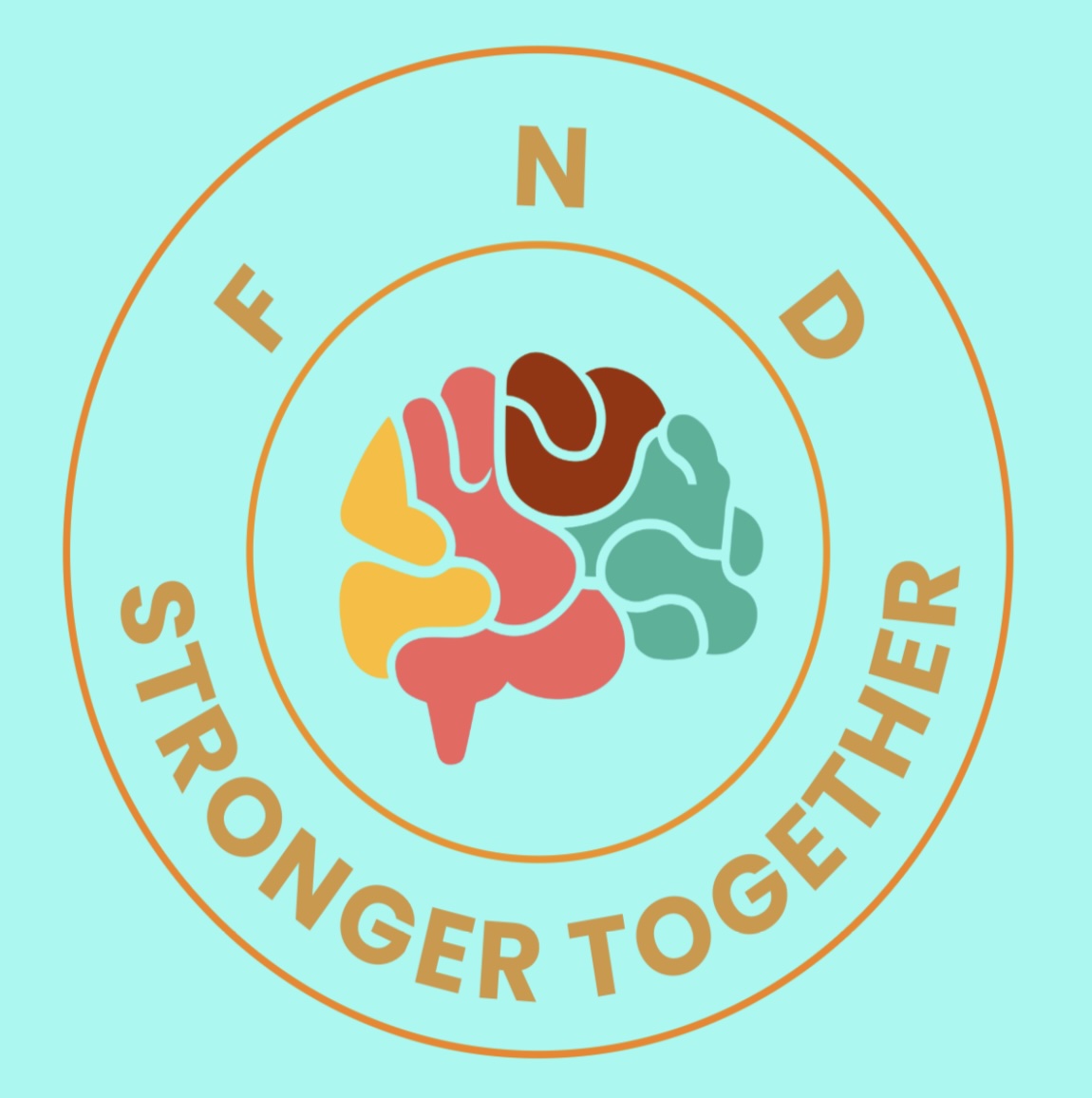
Navigating Daily Life with FND: Practical Tips and Strategies
Introduction: A typical Day with FND
There are many things that we take as granted each day, before our life changes with a neurological disorder such as FND.
A typical day before my FND symptoms began would start with waking up, having breakfast, and getting ready for work.
After work, I might play sports or meet friends for a social event.
At worst, I would just feel tired at the end of the day.
Now, with that I have FND each day is different and unpredictable.
For instance, Some days I suffer from severe fatigue that comes in waves, which leaves me unable to do anything.
On other days, when I go shopping or to work, I suddenly feel dizzy, as if the world is closing in on me.
My body stops functioning normally, and I experience sudden weakness in my legs, which sometimes causes me to collapse to the ground.
Firstly In the blog, I will discuss in more detail the challenges faced daily with FND
Finally, I explain some strategies that you can use to improve your daily life.

Challenges
There are many challengers faced each day when someone has FND.
These can include:-
Unpredictable and Fluctuating Symptoms
One of the challenges of FND is the unpredictability nature of its symptoms.
These symptoms can be motor, sensory, or cognitive and may emerge suddenly, fluctuating minute-to-minute or day-to-day.
This variability makes planning ahead extremely difficult.
Since someone might wake up unable to move a limb and later on find, that it improves as the day progresses.
Physical Mobility Issues
Since FND frequently affects movement and coordination.
People may experience a variety of motor symptoms, such as:
- Weakness or paralysis in limbs.
- Involuntary tremors or shaking.
- Muscle spasms or stiffness.
- Difficulty walking, which can include dragging a foot or feeling unsteady.
Cognitive Difficulties (“Brain Fog”)
Many people with FND struggle with cognitive symptoms that can interfere with daily life and work, such as
- Memory problems, such as short-term memory loss or forgetting why they entered a room.
- Difficulty concentrating or multitasking.
- Trouble with word-finding.
- A feeling of being mentally drained or “in a fog.”
Chronic Pain and Fatigue
Chronic pain and severe fatigue are common symptoms of FND.
The fatigue can be overwhelming and often fluctuates daily.
Exerting too much effort one day can result in a significant crash the following day, requiring increased rest to recover.
Therefore, this “boom-and-bust” pattern makes it challenging to maintain a stable and balanced lifestyle.
Sensory Processing Issues
FND can cause a person to be either hypersensitive or have a low awareness of bodily signals.
Therefore, these can manifest in:
- Extreme sensitivity to lights, noise, or temperature.
- Numbness, tingling, or “pins and needles” sensations.
- Loss of sensation in parts of the body.
- Inability to feel pain or temperature.
Seizure-Like Episodes
Functional seizures, also called non-epileptic seizures, are a challenging symptom of FND.
These episodes often resemble epileptic seizures but are not triggered by abnormal electrical activity in the brain.
They may include uncontrollable shaking, loss of consciousness, or sudden collapse.
Which can make everyday life and social interactions overwhelming and frightening.
Social Misunderstanding and Stigma
Many people, even some medical professionals, often misunderstand FND.
This misunderstanding can result in a lack of support and feelings of being disbelieved, dismissed, or accused of faking symptoms.
The stigma and the ongoing need to prove the legitimacy of their condition can create a heavy emotional burden.
Difficulty with Speech and Communication
FND can affect a person’s ability to speak.
This can include:
- Slurred or slowed speech.
- A new stutter.
- A shaky or strained voice.
- Sudden loss of speech (functional mutism).
Financial and Employment Instability
The severe and unpredictable symptoms of FND often make it hard to keep a full-time or part-time job.
Many people with FND cannot work, causing financial problems and lowering their quality of life.
Challenges in Diagnosis and Treatment
The diagnostic process can be long and frustrating for people with FND.
They are often misdiagnosed with conditions such as Multiple Sclerosis or epilepsy.
Even after getting the right diagnosis, it can be hard to find effective treatment such as physiotherpy and psychotherapy made for FND.

Strategies and Tips
There are several effective strategies to help manage your FND symptoms and enhance your daily quality of life.
Balancing and pacing
Balancing and Pacing is an important concept for people with FND to manage their symptoms.
The goal is to avoid the “boom-and-bust” cycle.
When feeling good, it easy to do too much, and therefore this can lead to a crash and your symptoms becoming worse.
Pacing means breaking activities such as physical, mental, and emotional, into small parts with planned rest in between.
You do each activity for a set time, no matter how you feel, instead of stopping when symptoms get worse.
This helps you learn your energy limits and avoid overdoing it.
Over time, this can help you increase your activity level, feel more in control, and work toward steady improvement.
Read More: http://fndhope.org/living-fnd/healthy-living/balance-2
Exercise
Exercise is a fundamental aspect of physical therapy and plays a crucial role in managing FND, despite the initial challenge of working through debilitating physical symptoms.
The primary aim extends beyond improving fitness to retraining the brain to perform normal movement patterns, whilst reestablishing the mind-body connection.
Physical therapy for FND typically starts by focusing on automatic movements, which are usually less impaired than voluntary ones.
Methods such as distraction, visualization, and rhythmic activities like swaying or dancing help bypass the sensation of being “stuck,” enabling the brain to relearn movement without the conscious effort that may intensify symptoms.
Furthermore, graded exercise therapy—an approach that gradually increases activity levels over time—is employed to counteract deconditioning, manage chronic pain and fatigue, and break the cycle of inactivity that often sustains FND symptoms.
Read More:– https://neurosymptoms.org/en/treatment/physiotherapy-exercise/
Psychological Therapies
Psychological therapies are important for treating FND because they help address the causes and ongoing symptoms.
Although FND is a brain condition, it is closely connected to emotions, thoughts, and physical feelings.
- Cognitive Behavioural Therapy (CBT): Addresses thought patterns and behavior’s that can worsen symptoms, helps regulate emotions, and improves coping strategies.
- Acceptance and Commitment Therapy (ACT): Focuses on accepting difficult sensations and emotions while committing to living a life aligned with values, reducing the struggle against symptoms.
- Pain Reprocessing Therapy (PRT): Aims to “unlearn” chronic pain by targeting the brain’s learned pain pathways.
Mindfulness And Relaxation Techniques
Mindfulness and Relaxation methods can help manage FND symptoms.
The key idea is to focus on the present moment instead of fear and anxiety about symptoms.
Mindfulness means noticing thoughts, feelings, and body sensations without judging them.
This helps people with FND see their symptoms without reacting in ways that make things worse.
Relaxation methods such as deep breathing, muscle relaxation, or guided imagery calm the nervous system and lower the stress that often comes with FND.
These practices break the cycle where stress makes symptoms worse, giving more control and reducing how often and how bad episodes are.
With regular practice, people can better control their body and mind.
Read More: http://fndhope.org/living-fnd/healthy-living/mindfulness/ and http://fndhope.org/living-fnd/healthy-living/relaxation/
Optimising Sleep
Getting good sleep is very important for managing FND because it affects how bad symptoms feel and energy levels.
Many people with FND have trouble sleeping, which can make symptoms such as tiredness, mental fog, and pain worse.
To sleep better, try to go to bed and wake up at the same time every day, even on weekends.
Make a relaxing routine before bed, like reading, taking a warm bath, or doing gentle stretches, to help your body get ready for sleep.
Keep your bedroom cool, dark, and quiet to help you sleep deeper.
Avoid caffeine, alcohol, and screens, especially from phones or computers, before bed to improve sleep and help control FND symptoms.
Read More: http://fndhope.org/living-fnd/healthy-living/sleep/
Grounding Techniques
Grounding techniques help manage the confusing and overwhelming symptoms of FND.
These methods help people connect with the present and their body when they feel detached or have a symptom flare-up.
The aim is to calm the nervous system and shift focus away from distress.
One popular grounding method is the 5-4-3-2-1 technique.
It involves naming five things you see, four things you feel, three things you hear, two things you smell, and one thing you taste.
This uses all your senses to bring your attention back to the present.
Other simple grounding ideas such as holding something cold, feeling the texture of fabric, or pressing your feet firmly on the floor, can be helpful.
Using these techniques often can help people with FND feel more in control and calm during episodes.
Read More: http://fndhope.org/living-fnd/healthy-living/other-techniques/
Nutrition
While no specific diet can cure FND.
Optimising nutrition plays a vital role in a comprehensive management approach due to the well-established connection between the gut and brain, known as the gut-brain axis.
Many individuals with FND experience related symptoms such as irritable bowel syndrome (IBS) and chronic pain, which are often influenced by diet.
Consuming a balanced, anti-inflammatory diet rich in fruits, vegetables, whole grains, lean proteins, and healthy fats, especially omega-3 fatty acid, can help reduce systemic inflammation that may worsen symptoms.
Additionally, maintaining proper hydration is essential, as dehydration can intensify neurological issues like fatigue and cognitive challenges.
Supporting a healthy gut microbiome through a fiber-rich diet and probiotics can also positively affect mood and brain function by promoting neurotransmitter production, including serotonin.
Making thoughtful dietary choices is therefore a crucial aspect of self-care for those with FND, supporting overall well-being and potentially easing symptom severity.
Read More: http://fndhope.org/living-fnd/healthy-living/nutrition/

Emotional / Social Impact
The social and emotional effects of FND can be as hard as the physical symptoms, creating many challenges that affect a person’s identity and relationships.
Stigma
One big challenge is the strong stigma and misunderstanding around FND.
Because symptoms can change and often don’t show on brain scans, people with FND face doubt.
Friends, family, and doctors may question their illness and say it’s “all in their head.”
This can cause frustration, anger, and feelings of worthlessness.
People with FND often have to fight to be believed, which is tiring when they are already dealing with tough symptoms.
Social Isolation
This lack of understanding can lead to deep social isolation.
FND can feel like a social death sentence.
Symptoms such as sudden tremors or loss of speech can make it hard to plan social events.
People may avoid friends and family out of embarrassment or fear of having an episode in public.
Simple activities like going to a restaurant or movie can cause anxiety.
Over time, this can lead to losing support when it’s needed most.
Independence
FND also affects a person’s sense of self and independence.
Many have to stop working or giving up hobbies, causing financial problems and loss of identity.
When you can’t do the things you love, like sports or walking your dog, grief and loss can be overwhelming.
The need for constant support can change family roles, making partners or children into caregivers, which can cause emotional stress.
Emotional Impact
Living with FND is emotionally hard.
Many also have anxiety, depression, or PTSD.
Living in a body that feels strange and unpredictable, in a world that often doesn’t believe you, is very stressful.
Fear of episodes, grief for a lost life, and exhaustion from dealing with an invisible illness can harm mental health.
For many, therapy helps not just with emotions, but with learning to cope and finding meaning despite the challenges.

Conclusion: Challengers and Strategies
Functional Neurological Disorder (FND) can cause many challengers to daily life, however there are strategies who can incorporate daily to lead a more normal and fulfilling life
Key Points
- If you are experiencing fluctuations in your symptoms, then think about keeping a diary to see if there is common cause (For example, Doing too much when you feel good)
- If you not used any of the techniques to manage your symptoms, then think about incorporating some them into your daily routine.
- The social and emotional impact of FND can sometimes be hard, however there are people who can help and support.
Message of Hope
FND can be difficult with fluctuating symptoms, but by incorporating some of the stragities mentioned you can improve your quality of life.
More is being learned about FND everyday and there is more guidance available to manage or improve your symptoms
If you feel like life is impossible with FND, don’t lose hope.
I have personally seen the benefit of using Pacing and Balance, Exercise and grounding techniques to manage my symptoms.
Link to Resources
- FND Hope (www.fndhope.org) stands as a cornerstone of the FND online community.
- Neurosymptoms.org (www.neurosymptoms.org), developed by Professor Jon Stone, a neurologist who has a special interest in FND. Indeed, this is an exceptionally valuable resource.
- myFND (www.myfnd.co.uk) is a secure and user-friendly app designed to assist individuals in managing their FND symptoms.
- FND Explained: Find information to help understand what FND in more detail
- Living With FND: Find practical information on living day-to-day with FND and available treatments



